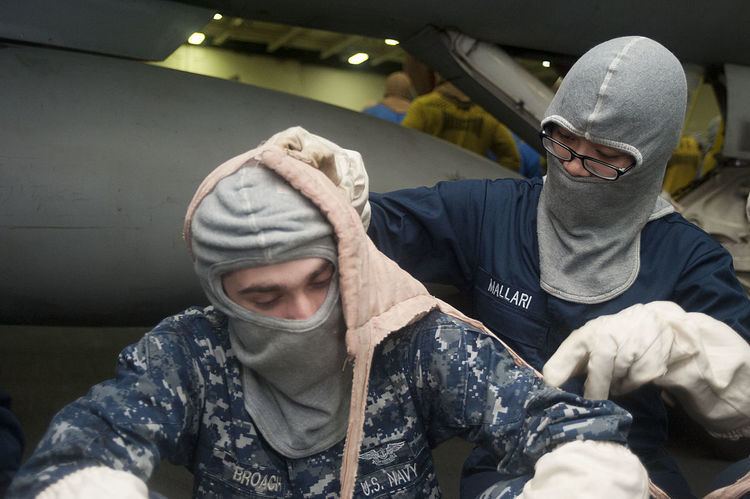 | ||
A field dressing or battle dressing is a kind of bandage intended to be carried by soldiers for immediate use in case of (typically gunshot) wounds. It consists of a large pad of absorbent cloth, attached to the middle of a strip of thin fabric used to bind the pad in place. Field dressings are issued in sealed waterproof pouches to keep them clean and dry; the pouch can be torn open when required.
In combat, each soldier carries one field dressing ready for immediate use. Standard doctrine is that a casualty's dressing should be used rather than the rescuer's - the rescuer may need to help another casualty, or be helped himself, whereas the original casualty is not going to make any other use of his own dressing. Because of this, it is important that soldiers know where to find their comrades' field dressings, and infantry units typically have their own SOP stating where they should be carried. British Army uniforms issued in the past included dedicated field dressing pockets. During the Great War, this pocket was in the front left skirt of the tunic, with the introduction of Battledress (1937), it was moved to the trousers, but the current clothing does not. Instead, a common location for field dressings is the left shoulder-strap of the webbing, either held in place with gaffer tape or contained in a small pouch that is not issued but can be purchased from several civilian suppliers.
Some combat medical technicians make use of field dressing wrappers in the management of "sucking" chest wounds. In such wounds, the working of the chest sucks air through the wound into the space around the lung, rather than sucking air down the throat and into the lung. The hole must be sealed to enable the casualty to breathe properly. As a battlefield interim measure, the waterproof wrapper of a field dressing can be placed over the hole, with the clean inside against the wound, and taped in place. Tape is applied to the sides and top of the wrapper, leaving the bottom edge free. The wrapper then acts as a simple flapper valve, preventing air being sucked in but allowing any that has already entered to be forced out as the casualty exhales.
